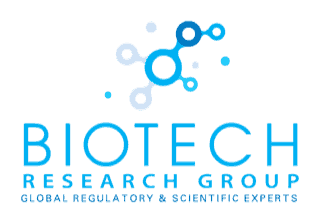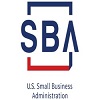Pharmacovigilance: What is it?
08/31/2018
Category: Good Industry Practices
Outside the pharmaceutical world, the concept of “Pharmacovigilance” is rarely discussed or understood. In certain circumstances, the full conduct of pharmacovigilance may also be a slightly overwhelming task within the pharmaceutical industry. Simply collecting and submitting case reports of adverse events is not appropriate. Pharmacovigilance spans the entire life-cycle of a drug and applies to both safety and efficacy. The following discussion briefly provides a general overview of many of the necessary components needed for the evaluation of drug-adverse event relationships.
The 2005 FDA Guidance for Industry, Good Pharmacovigilance Practices and Pharmacoepidemiologic Assessment describes pharmacovigilance as:
“All scientific and data gathering activities relating to the detection, assessment, and understanding of adverse events. This includes the use of Pharmacoepidemiologic studies. These activities are undertaken with the goal of identifying adverse events and understanding, to the extent possible, their nature, frequency, and potential risk factors.”
The science and art of Pharmacovigilance involves investigating information from a variety of sources in order to understand the safety profile of a drug. This safety profile must then be taken into serious consideration when justifying exposing people, often millions, to the product. This is part of the “risk/benefit” or “benefit/risk” analysis. Any identified excess risk or adverse events, as compared to what would normally be expected (qualifying as a “signal” or “safety signal”) demands further research and investigation to determine the risks to patients/consumers. These investigations include causation analysis, identification of possible at-risk sub-populations that may need further assessment, the need for communication of the noted risks, and potentially continued marketing justification. Communication of the risk signals are often based on the professional labeling and therefore include, but are not limited to, product labeling changes (including immediate safety changes via Changes Being Effected Supplement, patient labeling, and Medication Guides), Dear Healthcare Provider Letters, public announcements, and informing FDA of the risks as soon as they are observed. If warranted, more intensive risk mitigation plans may soon follow.
Also Read: Why is it important to have a medical device designed and developed?
The moment a drug is available on the market and used in a “real-world” setting, the safety profile may change. Since FDA does not regulate the practice of medicine, practitioners may prescribe as they see fit. This is in contrast to Pre-approval stages of drug development which involves patient tracking by both the company and investigators. Additionally, patients in studies are carefully selected and drug administration is precise, following the strict clinical trial protocols. Therefore, pharmacovigilance standards and practices must not only involve assessment of those using the products as labeled, but include the assessment of all patients, including those exposed off-label.
Pharmacovigilance is comprised of various activities. The most basic is the receipt of spontaneous case reports. These case reports of adverse events, which often include a wide range of patient characteristics and adverse events/reactions, are submitted by various entities such as consumers/patients, prescribers, facilities (e.g. hospitals), and world-wide regulatory agencies. These reports must be assessed, submitted to FDA, and followed-up to better understand the relationship of the adverse event to the drug. Follow-up with the reporter improves understanding of the adverse event since the patient’s condition may change over time. This information could be vital in the understanding of the risk/benefit profile. Important information obtained from case reports often includes demographics, dosages, and challenge/dechallenge/rechallenge descriptions.
Assessment of these individual case reports and series should be supplemented by analyses of spontaneous reporting databases. FDA Adverse Event Reporting System (FAERS) and Vaccine Adverse Event Reporting System (VAERS) can be critical components of pharmacovigilance. These databases contain drug and vaccine adverse event information reported to the Agency from sponsors, consumers/patients, prescribers, facilities (e.g. hospitals), and world-wide regulatory agencies. Various statistical analyses can be performed using these data to determine whether decreases or increases in reporting rates for events are occurring, thus affecting the risk/benefit profile. It is also a wise practice to assess reporting rates of other drug products that are in the same class as the sponsor’s subject drug. Evaluation of other drugs across a class may often help predict issues that might arise with another drug in the same class. This practice may also assist in determining if a certain drug may possibly be safer than others. In certain circumstances, it may be possible to determine if population dechallenge or population rechallenge (+ or -) exist. For example, it may be observed that when a drug is no longer made available for a specific population, the previously associated adverse events decrease in numbers in the population (+ population dechallenge). Even though the signals derived from these spontaneous reporting databases may provide substantial evidence of a drug-adverse event relationship and require labeling changes and public notifications, more intensive study may be needed to more fully determine the risk/benefit profile. It is important to remember that spontaneous reporting databases often only represent a fraction (usually ≤10%) of the adverse events that occur with the use of a drug.
Another extremely important source of information useful in the determination of the risk/benefit profile of a drug is scientific literature. Using various sources and search platforms such as PubMed, Embase, SCOPUS, grey literature, etc., companies should thoroughly search, retrieve, and review/analyze all adverse event literature pertaining to the subject drug. All types of scientific literature (full manuscripts, commentaries, abstracts, etc.) should be included in these searches. Since these authors are from a variety of backgrounds (independent researchers, academia, other pharmaceutical companies, etc.) the scientific literature often provides both common and “out-of-the-box” protocols and research approaches to investigate drugs. Therefore, the information is critical in helping to assess the risk/benefit profile of a drug. Additionally, it is important to note that certain findings of drug-adverse event relationships, including single case reports, must be reported to FDA.
Signals originating from the sources described above may require further investigation. These investigations are often referred to as “Pharmacoepidemiological studies”. These studies are used to assess the drug-adverse event associations and are much stronger evidence of causal relationships than those evaluations conducted at the individual patient level. Pharmacoepidemiological studies may be of various designs. However, the following are the most common:
- Cohort – Compare those exposed to those not exposed to the drug(s) and follow over time to determine adverse outcome. More appropriate for common diseases. This design provides relative risks and often incidences can be calculated.
- Case-control – Compare those with and without the adverse event and determine previous differences in rates of exposures to the drug(s) in question. More appropriate for rarer diseases. This design provides odds ratios which approximate the relative risks. Incidences cannot be calculated.
- Registry – This collection of information may take on various forms. The most obvious is a database consisting of information from those patients exposed to a drug (often for a specific subpopulation, such as pregnant women). Specific information may then be collected from these patients over time. However, a registry may be created to track patients who develop a disease.
- Survey – These may take many forms and may be conducted using both patients and prescribers.
The advanced capabilities and availabilities over the last couple decades of large health care claims databases have greatly enhanced the ability to perform pharmacoepidemiological studies. The data sets are often an ideal setting to assess drug-adverse event relationships since they usually contain millions of patients and track information longitudinally for years. Obviously, certain limitations exist (e.g. limited access to full medical records, miscoding, retrospective nature). However, the large volume of patients over wide geographical areas and populations increase the precision and capabilities of these studies to aid in assessing risk/benefit profiles and causal associations. The ability to determine if population dechallenge or population rechallenge exist is extremely helpful in causation assessment.
The information discussed above has some of the general pharmacovigilance components that prudent pharmaceutical companies often conduct. This discussion is not all inclusive, and in some situations, there may be some alternative or enhanced safety surveillance that should be performed. In general, companies need to assess safety information, any possibly generated signals, and perform overall risk assessments. It is wise to confer with FDA regarding more complicated pharmacovigilance plans and provide transparency to the Agency. The most important role of pharmacovigilance, and the drug company, is to assess drug safety and ensure that the benefits of a pharmaceutical product outweigh the risks. If risks do exist, this information should be relayed to regulatory authorities, prescribers, and patients/consumers.
Biotech Research Group (BRG) is fully versed in the science and art of pharmacovigilance and pharmacoepidemiology. We are available to assist with, at all levels of development and post-marketing, your pharmaceutical, biologics, and device company needs. Please call or email BRG if you need any kind of regulatory-related assistance.
The opinions and statements in this paper are those of the author and do not necessarily reflect those of BRG.


